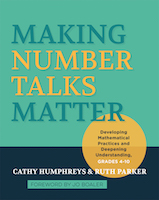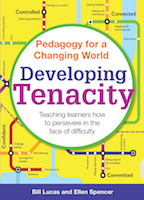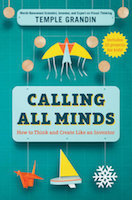A growing body of research reveals details of the “Curse of Expertise” in which it is shown that as an individual’s level of expertise increases, their ability to communicate their knowledge to a novice declines. The extent to which an expert assumes information to be common knowledge can be so large that they fail to see the gaps which exist in the understanding of a novice. The take-away is that the expert needs to consciously think like a novice and be deliberate in seeking an understanding of where the novice’s knowledge of a subject strikes its limit.
Physicist and author, Richard Feynman could be considered a master at overcoming the curse of expertise. He understood that the best indication of a truly deep understanding of a concept was revealed in one’s capacity to describe it to a child. His advice: "When we speak without jargon, it frees us from hiding behind knowledge we don’t have. Big words and fluffy “business speak” cripples us from getting to the point and passing knowledge to others.” Feynman understood that his expertise would prove to be a barrier to his students learning and that as such he would need to take actions to ensure his knowledge was accessible; something all educators should do.
But what if our expertise is imagined or false. What if what we think is so, just ain't so. This might be more common than we care to admit, and it is worth considering the source of this difficulty and its implications.
Not just what we were taught but also the way that we were taught things in school shapes our beliefs about what matters, and these messages can be hard to undo. Consider the average mathematics class that the typical teacher experienced when they were forming an understanding of what mathematics is all about. The emphasis was almost certainly on accurate calculations and application of prescribed methods which would result in the correct solution. Today that teacher is likely to believe that mathematics demands this sort of knowledge and that an expert mathematician is one who can quickly and accurately perform calculations. The trouble is this is false expertise as revealed by comparing these beliefs with the way that maths is described by a modern syllabus; "Mathematics is a reasoning and creative activity employing abstraction and generalisation to identify, describe and apply patterns and relationships….The study of mathematics provides opportunities for students to appreciate the elegance and power of mathematical reasoning and to apply mathematical understanding creatively and efficiently.” (NESA, 2017) In place of speedy and accurate calculation the syllabus speaks of “enjoyment”, active participation” and “challenging and engaging experiences”.
The same is undoubtedly true of other disciplines. If you spent time in a typical Science classroom you would likely believe that the work of a scientist revolves around correctly filling in a science lab report. The emphasis of the learning is on accurately filling in the template and a knowledgeable scientist would know the template by heart. In History the lessons seemed to revolve around remembering a list of dates, names and places and expertise could be measured by the number of facts which one might recall on demand. Somehow this does not fit with the rationale for the study of History according to the syllabus: "History is a disciplined process of inquiry into the past that helps to explain how people, events and forces from the past have shaped our world.” And if Geography is a “rich and complex discipline" that “build(s) a holistic understanding” and "is the study of places and the relationships between people and their environments”, how does it get reduced to knowing where you find Muscat on a map. False Expertise.
The implication of this unquestioned false expertise is that it becomes self-repeating. We believe that our knowledge base and underlying beliefs about the disciplines we teach are sound. Our teaching methods are founded upon this knowledge and these beliefs and so we present our students with a view of learning within these disciplines which is aligned with them. We perpetuate false expertise.
We must unlearn and relearn what we know and in doing so question the beliefs upon which our expertise is constructed. We need to examine closely the rationales for what we teach and understand deeply the concepts our students are needing to learn. We need to ask always, What will students actually do with the skills and knowledge they are acquiring and what underpins my belief that this learning will matter in the lives they are likely to live.
By Nigel Coutts














